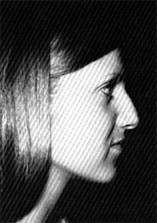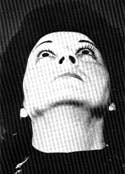ALVIN I. GLASGOLD, M.D.
Chairman, Department of Otolaryngology-Head & Neck Surgery, St. Peter’s Medical Center and Middlesex General-University Hospital, New Brunswick, New Jersey
Clinical Associate Professor in Department of Surgery, UMDNJ-Rutgers Medical School, Piscataway, New Jersey
Read in part before the Third International Symposium on Plastic and Reconstructive Surgery of the Head and Neck, New Orleans, LA, May 4, 1979.
Accurate determination of tip position in relation to the rest of the nasal dorsum is of utmost importance in achieving the desired profile in rhinoplasty. The ability to prevent or estimate the degree of postoperative drooping of the tip can be one of the most difficult aspects of rhino-plasty.’
Methods of maintenance of tip projection have been varied. They have included Goldman’s technique of suturing the transected medial crura together, utilizing permanent septocolumellar sutures, as advocated by Berman, and various forms of columellar implants. The utilization of a cartilaginous columellar implant, as described by Anderson, may be one of the most predictable means of establishing nasal tip projection and eliminating the untoward effects of the postoperative drooping tip.°
The Technique for Utilization of the Columella Strut
Cartilage is obtained from the septum through a standard submucous resection. The most inferior portion of the nasal septum just adjacent to the spine is thick and usually makes a very good strut. This can be trimmed so that it is thin and narrow, about 3 mm in width and usually measures somewhere between 2.1 and 2.6 cm in length. Each end is tapered.
If this inferior portion of septum is not intact, then a similar strut may be fashioned from any appropriate part of septal cartilage which, although not as firm, may still make an adequate strut. Fresh septal cartilage taken from a previous case may also be utilized.
A vertical incision is made for about ½-¾ the length of the columella on either one or both sides. The incision is distal to the medial crura. In learning the technique, it seems that by utilizing an incision on both sides it is easier
to produce a symmetrical pocket and symmetrical placing of the strut. The skin is separated from the medial crura and a pocket is made the length of the columella and continues down to just above the premaxilla. This may be visualized by elevating the lip and seeing the bulge made by the point of the scissors. The lobule is not entered anteriorly superiorly.
The strut is usually prepared a little longer than the anticipated pocket and then trimmed down accordingly so that it just fits into the pocket without producing a stretch-ing effect on the columella. By utilizing an excessively long strut and actually stretching the columella, some increased length may be established in very selected cases.
The columella strut produces a number of favorable ef fects (Figure 1).
 |
| Figure 1. The Columella Strut |
It will change the nasolabial angle from an acute or right angle to a more favorable obtuse angle. It thus produces an apparent nasal shortening, often reducing the need to shorten the nasal septum. It can support or project tip position as well as rotate the lobule in a cephalic direction. In doing this it not only maintains the desired tip position but helps accentuate the tip. Tip rotation and accentuation over the dorsal profile line results in an esthetically pleasing effect.
The short columella is usually the result of short or weak medial crura. The resulting swelling occurring from the injection of local anesthetic plus surgical trauma will pro-duce an apparent surgical elongation of the columella which will change significantly in the postoperative period leading to a reduction in tip projection and thus altering the final profile result. It is a frequent contributing factor in producing the unfavorable postoperative “polly beak” deformity. The strut will lend support to the medial crura and then maintain columella length or even elongate the short columella.
A retracted or even a straight columella can be changed to the more pleasant convex shape by insertion of the columella strut. This will also generally hide any columella irregularities and can straighten an angulated columella.
There are very few disadvantages to the use of the columella strut. Probably the greatest disadvantage is that a submucous resection has to be added to the procedure to obtain the cartilage. In the deviated septum, this would have been accomplished in any event. When the septum is relatively straight, cartilage removal is easy and should add only minutes to the procedure. We have occasionally en-countered swelling and inflammation at the site of insertion. This is only short-lived and requires patience only. No strut has ever extruded.
 |
 | |||
| Figure 2A. Preoperative | Figure 2B. Postoperative | |||
The superior portion of the strut, in rare instances, may project on the surface of the columella and this can be easily trimmed postoperatively.
The surgeon must recognize the presence of a prominent nasal spine and in these cases shorten the spine and the lower portion of the septum. If this is not recognized, the strut can project excessively, producing a nasolabial angle which appears too obtuse.
Clinical Applications of the Columella Strut Perhaps the most appropriate indication for utilization of columella support is in the short columella (Figure 2).
This case illustrates the postoperative elongation of the columella as well as its ability to rotate the tip upward and produce nasal shortening in what appeared to be a long nose. This was accomplished without shortening the septum.
In revision surgery, especially to correct a “polly beak” deformity or excess supratip prominence, the strut is very useful. Figure 3A shows the preoperative profile. Postoperatively, Figure 3B, there was almost a “polly beak” effect because of lack of columella support. This was corrected by utilizing a C-strut as shown in Figure 3C.
 |  |  |
| Figure 3A. Peoperative | Figure 3B. Postoperative | Figure 3C. Post revision surgery |
The large bulky nose has a marked tendency toward postoperative drooping. This case shows the effect of the columella support in preventing postoperative drooping (Figure 4).
 |  |  |  |
| Figure 4A. Preoperative profile view | Figure 4B. Postoperative profile view | Figure 4C. Preoperative base view | Figure 4D. Postoperative base view |
 |
 | |||
| Figure 5A. Preoperative | Figure 5B. Postoperative | |||
In addition, the base views indicate that it con-tributes to straightening a markedly deformed columella.
For the experienced rhinoplastic surgeon, the challenge of the nose that is really not bad but could look better is possibly the most difficult. To make bad better is not nearly as difficult as making good great. This case illustrates just such a problem (Figure 5).
The use of the strut helps provide a little better tip definition and slight upward rotation without nasal shortening. It also improves the convexity of the columella.
Summary
The columella strut has been a time-tested adjunct in rhinoplasty. It gives one the ability to add a dimension to the final result in rhinoplasty beyond that which the standard technique will allow. The technique is relatively simple. The indications, as described, are numerous and the disadvantage minimal.
- Janeke J and Wright WK: Studies on support of the nasal tip. Arch Otolaryngol 93:458-64, 1971.
- Goldman I: Rhinoplasty Manual.
- Berman W: Surgery of the nasal tip. Otol Clinics 8:3, 563-574, 1975.
- Anderson JR: New approach to rhinoplasty. Arch Otolaryngol 93:284-291, 1971.
Send Reprint Requests to:
Alvin I. Glasgold, M.D.
31 River Road
Highland Park, New Jersey 08904



